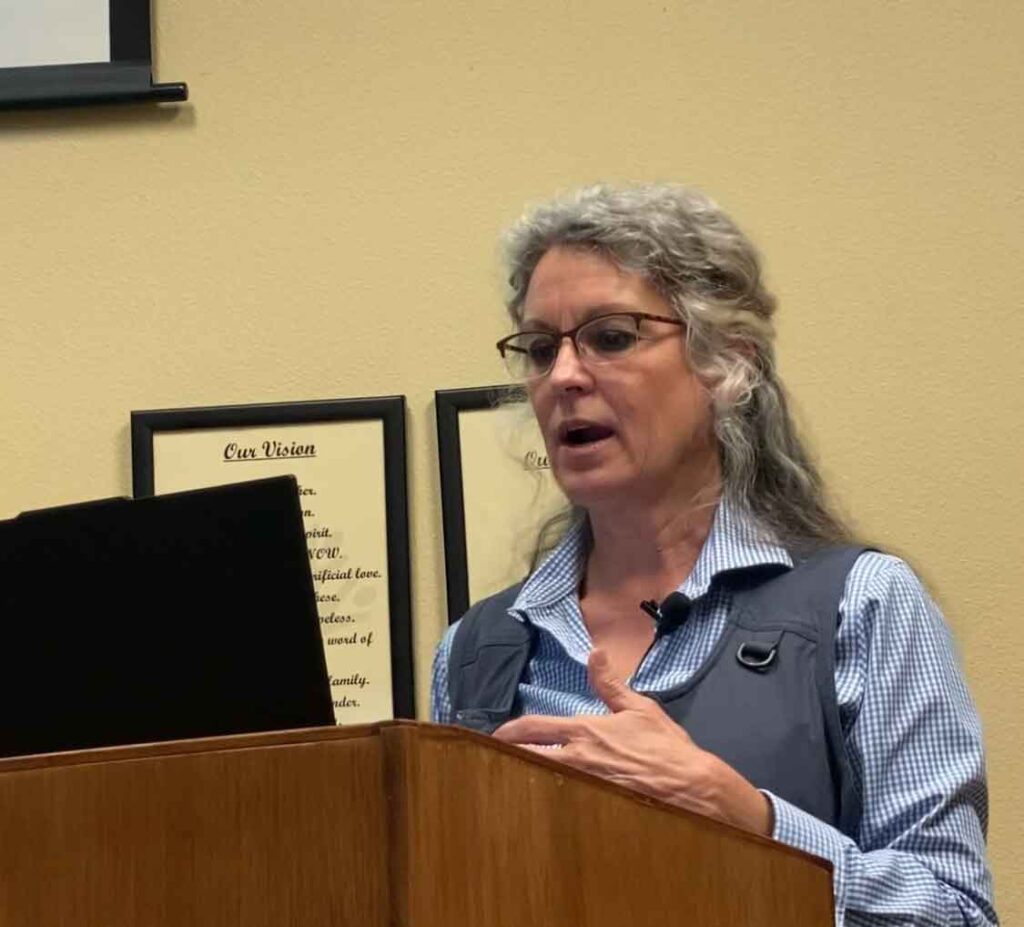
My 2024 garden season got off to a busy start! I was the guest speaker for the February meeting of Union County Master Gardeners, in El Dorado, AR. With no assigned topic, I presented an unexplored subject, but one I’m attempting to do at Richland Creek – the production of hardy annuals for cut flowers.

The January invitation was perfect timing to brush up on some information and share what I’m learning about the “other annuals” we Southerners fail to invite to our garden party. I had a hunch I wasn’t the only one leaving them off my seed-buying list and I wasn’t wrong. Of the fifty-five-plus individuals who attended, only Mrs. Charlotte Abbott, the sage of the bunch, had been growing them and she “fessed up” to Larkspur and Bachelor Buttons. Everyone else looked at me with blank stares.
The slideshow, “Hardy Annuals – Why Aren’t We Growing Them?” hit the high points of growing cool-season flowers (hence the name Hardy) through the lens of a Zone 8 grower. More pointedly, I took what we already knew about our warm-season flowers (or Tender annuals i.e. Zinnias spp., Sunflowers, Helianthus annuus; and Marigolds, Tagetes spp.) and discussed the physiological differences between them and this class of cool-season bloomers (i.e. Love-in-a-Mist, Nigella; Corn Cockle, Agrostemma githago; Snapdragons, Antirrhinum majus; Sweet William, Dianthus barbartus, etc.). From there I dove into “calendar math” so we would know the proper seeding and planting time to actually achieve flowers in early spring; and then I enumerated many of the benefits of growing them at a time when we thought nothing else would survive.
But my subtitle, “Why Aren’t We Growing Them?” actually got to the heart of the matter. Perhaps more important than our collective savvy was something I discovered about all of us – this group of plants was akin to our view of life above the “Mason Dixon Line” and we weren’t fluent on the subject at all.
Like a good Celebrate Recovery attendee I inwardly felt the need to confess, “Hi! I’m Rhonda, I’m a grateful believer in Jesus Christ, and I struggle with growing hardy annuals because they are from the North…”. Yes, I said it. They were like Yankee blooms. Forever in my mind, and I’m sure all the other genteel folks in the room had thought this class of flowers could only be grown where gardeners don’t sweat like people “breakin’ a fever. They appear on the cover of northern magazines for a reason! You dare not get your hopes up growin’ ‘em here because they’ll break your heart and give you reason to believe you can’t grow a dang thing!”

As it turns out, we Southerners have been terribly wrong about these cold hardy plants. In fact, the good Lord has so richly blessed us with a mild climate that we can grow both varieties of annuals if we only plan ahead. By re-thinking what we CAN GROW in our frost/freeze window (mid-October through mid-March) we can get two to three more months of blooms compared to growing tender annuals alone. We just have to accept the fact that not all plants prefer flipflop weather!
So, the program gave me a chance to own up to my ignorance …even at thirty plus years of horticultural experience. And I got the opportunity to encourage my friends to try planting hardy annuals this fall. They would be amazed at the results if their “perspective of origin” changed a few hardiness zones and they welcomed them into their “garden club” with southern hospitality!

For more information on growing hardy annuals for cut flowers. Give us a shout. We’d love to visit with you.
Or if you’d like to purchase cut flowers from Richland Creek Farm & Market be sure to join our CSA Membership program to know what’s in bloom and be first in line.

I love seed time!!! It’s “hope springs eternal” with each new life.